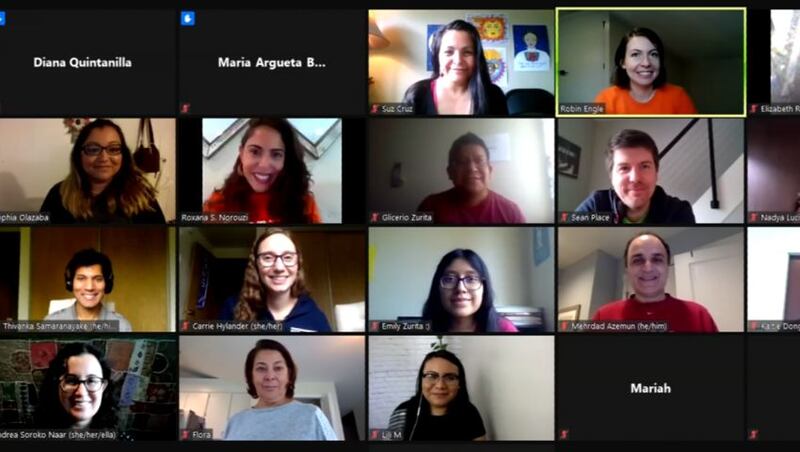With just two weeks until the election, organizations are working overtime to get out the vote. And that’s especially true among groups focusing on minorities, who historically don’t vote at the same rate as white voters.
In a year when people are staying at home more due to the pandemic, groups focused on getting out the vote are having to turn, more than ever, to social media.
“Your vote counts, even if you don’t vote,” president of the League of Minority Voters, Promise King, said. “[It] only counts against you-- against your interests.”
The league has released videos from members and community members, like Braden Bishop with the Seattle Mariners. The message is the same: “We have the power to make change happen. But we have to use that power. Please get out and vote by Nov. 3. Your life depends on it.”
King started the league in Oregon in 2007. It’s been expanding to Washington and other states, reaching out to minority voters online, through groups and associations, and at food banks, busy during this pandemic.
“Black, Latino, and Asian-American voters have been a growing segment of the American electorate for the past generation,” University of Washington assistant professor of Political Science Jake Grumbach said.
In Washington state, numbers from the Pew Research Center show a 4% increase in the Hispanic share of eligible voters since 2000 and a 3% increase in the non-Hispanic Asian share of eligible voters, whereas the non-Hispanic Black voter share has stayed about the same.
Grumbach says the increases are due in large part to the children of immigrants coming into the electorate.
“Young Latino voters, young Asian-American voters becoming a large force in American politics,” he said. “They have the potential to really shape American politics going forward.”
But, Grumbach notes, turnout among groups is not the same.
“Latinos and Asian-Americans do turn out to vote at lower rates than African-American and White American individuals,” he said.
That’s supported by Pew’s findings on turnout of eligible voters during presidential elections since 2000.
Black voter turnout has hovered near or above 60% over the past 20 years, peaking at 67% in 2012. That was above White voter turnout that year, which peaked in 2004 at 67%.
Asian and Hispanic voter populations have a ways to go, with turnout among Asian voters peaking at 49% in 2016 and turnout among Hispanic voters peaking at 50% in 2008.
Teens like Paulina Laris, a volunteer with One America, are trying to change that.
“I have an Hispanic background,” Laris said. “Both my parents are immigrants from Mexico.”
While also participating in phone banking, Laris is using social media to reach young voters and invite them to participate.
“I use Snapchat to reach out to my peers and I ask them, ‘Hey, are you free this weekend? Do you want to do some phone banking with me?’” she said.
Paulina is turning 18 in November right after the election, so she wants others to make their voices heard.
“I just find it to be very important that people of color, especially, go out and they use their voice to speak up about their own issues and what they believe,” she said.
Seema Abbasi with the League of Minority Voters knows it’s important to tell her story, too.
“In my own community, which is Asian-American, Pakistani-Americans, the voter turnout is actually one of the lowest,” she said.
Abbasi is posting in her Facebook groups to reach voters.
“One of them is Muslims in Seattle which is a lot of members in the Washington, Seattle area,” she said. “And the other one is the Pakistani-American Washington chapter.”
As a U.S. citizen for the past 15 years, she calls it a privilege to vote in this country.
“I feel that it is really important for every citizen, whether you’re minority or whether you’re White, to be fully engaged in this process,” she said.
In Washington you can vote by mail, which means you can get your ballot in the mail or a drop box now.
Both groups encourage people to have a plan and ensure that their ballot is postmarked by Nov. 3 or placed in a drop box by 8 p.m. that night.
Cox Media Group








